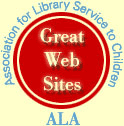
CRLS Research Guide Cambridge Rindge And Latin Research Guide
|
|
Getting an Overview
Tip Sheet 3Ask these questions:
What is it?
Getting an overview is finding a source of information that gives you a simple understanding
about a topic without telling you all about it in great detail. An overview should
have some basic facts and be in clear enough language for you to understand. It
should answer the questions; "who", "what", "when" and "where", and only briefly
some of the "why" and "how" questions. Think of an overview as a picture taken from
a distance where all of the details are not in focus. Your later research will bring
those details into focus.
Why do it?
Getting an overview will help you
- get a general understanding of your topic.
- begin to know what kinds of subtopics are within the general topic.
- begin to ask some questions that you will answer later in the research process.
- begin to focus your topic into one you can handle in your project.
How do I find one?
Encyclopedias are one of the best sources of overviews. They organize information
into subtopics and don't go into too much detail.
Encyclopedias are available in print and on the computer. Some articles are very long, so if you are using one on the computer, don't just print the whole article. Select the sections that you need and just print those. Ask a library staff person for instruction if you are not familiar with using encyclopedias.
You can also find some good overviews on websites, but you need to be able to evaluate the information you find to make sure it is accurate information. It is better to use an encyclopedia first, get some basic information, and then search for a website. You can compare the website information to that in the encyclopedia to make sure it is accurate.
Short books and books written for younger readers can also be very good overview sources. They often provide good pictures, charts, and graphs, as well as time lines and glossaries to aid your introductory understanding of a topic. Since they are written for younger readers they can be read quickly and provide a good foundation for understanding books and articles written for high school and adult readers.
Encyclopedias are available in print and on the computer. Some articles are very long, so if you are using one on the computer, don't just print the whole article. Select the sections that you need and just print those. Ask a library staff person for instruction if you are not familiar with using encyclopedias.
You can also find some good overviews on websites, but you need to be able to evaluate the information you find to make sure it is accurate information. It is better to use an encyclopedia first, get some basic information, and then search for a website. You can compare the website information to that in the encyclopedia to make sure it is accurate.
Short books and books written for younger readers can also be very good overview sources. They often provide good pictures, charts, and graphs, as well as time lines and glossaries to aid your introductory understanding of a topic. Since they are written for younger readers they can be read quickly and provide a good foundation for understanding books and articles written for high school and adult readers.
What do I look for in an overview?
Notice the way the information has been organized within the overview. Take notes
on the headings and subheadings that are used to subdivide the information. These
can give you some possible ways to help focus the topic of your paper. In a short
book, look at the table of contents for subtopics.
Select a subtopic that interests you from the overview. Once you have an understanding of the general subject and a particular subtopic, see Tip Sheet 8 Focusing a Topic for ways to narrow your topic down more.
Select a subtopic that interests you from the overview. Once you have an understanding of the general subject and a particular subtopic, see Tip Sheet 8 Focusing a Topic for ways to narrow your topic down more.



